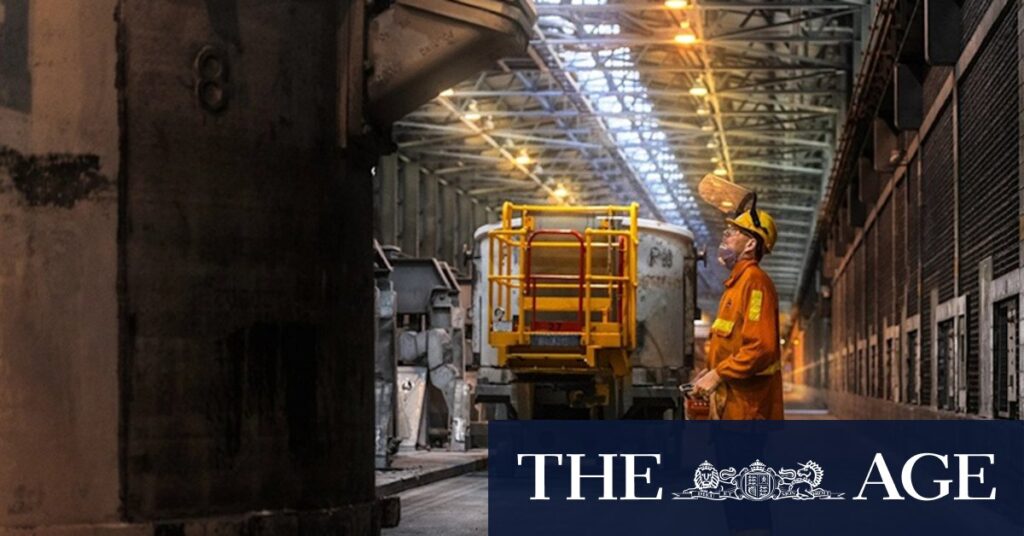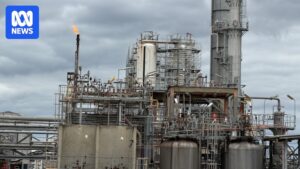
Mining giant Rio Tinto is currently engaged in critical negotiations with the federal and New South Wales governments to prevent the closure of Australia’s largest aluminium smelter. The Tomago Aluminium plant, located in the Hunter region, faces a significant threat to its survival due to a potential surge in electricity costs.
On Friday, Tomago Aluminium, which is majority-owned by Rio Tinto, announced that it is collaborating with government ministers to find “viable pathways” to ensure the 40-year-old smelter remains operational beyond 2028. This move aims to protect the jobs of over 1,500 employees.
If a taxpayer-funded support deal is reached, it will be the fourth intervention by the Albanese government this year to support struggling metals processors. Previous interventions included bailouts for Glencore’s Queensland copper smelter and refinery, Nyrstar’s smelters in Port Pirie and Hobart, and the collapsed Whyalla steelworks.
Rising Energy Costs and Economic Viability
Tomago Aluminium’s chief executive, Jerome Dozol, highlighted that energy costs, which comprise more than 40 percent of the smelter’s operational expenses, are set to more than double once the current contract with AGL expires at the end of 2028. This increase poses a severe threat to the plant’s economic viability.
“The greatest challenge for our business is energy, with reliable and affordable power essential for aluminium smelting on a sustainable basis,” Dozol said. “Under market proposals for power supply from January 2029, our current energy costs would more than double – fundamentally changing operating economics.”
The energy-intensive smelter is the largest single user of electricity in New South Wales, consuming more than 10 percent of the state’s power supply. Tomago Aluminium produces up to 590,000 tonnes of aluminium annually, which is used in various industries, including construction, automotive, and renewable energy sectors.
Transition to Renewable Energy
Rio Tinto is actively exploring renewable energy options for its smelters. The company is transitioning its Boyne plant in Queensland to renewable energy sources, having secured agreements for wind, solar, and battery storage projects to meet 80 percent of the smelter’s average electricity demand. However, finding sufficient renewable energy supplies for the Tomago smelter in New South Wales has proven challenging.
Many Australian metals processors are struggling to remain viable amid increasing competition from cheaper Chinese suppliers and rising energy costs. Historically, aluminium smelters have received government support through cheap electricity supply for over 40 years.
Government Support and Economic Concerns
In the 2024-25 budget, the federal government established a $23 billion, 10-year Future Made in Australia fund to support industries essential for clean energy and low-carbon production, including critical minerals, green steel, and aluminium. Despite this, some economists question the efficacy of government bailouts for private companies.
“Research shows that the unemployment consequences of failing companies are temporary, so the employment argument does not work,” said University of Western Australia macroeconomist Jakob Madsen. “Progress is made by good jobs in progressive industries, not by maintaining alienating companies.”
Mark Vassella, CEO of Australian steel giant BlueScope, recently warned that the nation’s manufacturing sector is at a “dangerous crossroad” due in part to the escalating cost of natural gas. He cautioned that the economy could face “deindustrialisation” if these issues are not addressed.
Federal Industry Minister Tim Ayres was contacted for comment but has yet to respond.
The outcome of the negotiations between Rio Tinto and the government will be closely watched, as it could set a precedent for future interventions in Australia’s industrial sector. The discussions are critical not only for the future of Tomago Aluminium but also for the broader implications on the country’s manufacturing landscape.







